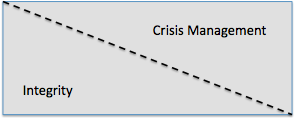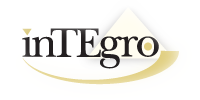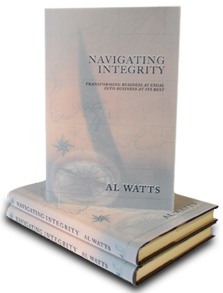I am struck by how often two “C” words appear in the press: “compliance” and “crisis,” as in crisis management or crisis communication. Corporations, particularly publicly held financial services organizations, are spending billions of dollars just assuring compliance with ever-increasing regulatory requirements; the average annual compliance and ethics budget of U.S. insurance companies alone in 2012 was nearly $12 million. And they spend many billions more in fines and legal fees when found not in compliance; in 2013, J. P. Morgan alone settled with U.S. authorities for $13 billion on account of shady investment practices. Institutions of all kinds including government, media, sports and religious organizations are increasingly utilizing internal or external public relations and communication specialists to apologize for transgressions or failures and attempt rebuilding public trust. There is an alternative.
Another “C word” that deserves more of organizations’ attention is “culture.” If organizations and their leaders invested in culture earlier and more robustly, most non-compliance and crisis communication expenses could be eliminated. We’ve heard that “culture eats strategy;” it also eats compliance and crisis communication. Compliance is mainly about laws, rules, risk management and what not to do; it is externally imposed, usually in response to earlier harmful practices that we may not even have been party to. Are you more likely to do something when forced to, or when you want to, know it is the right thing to do and get reinforced for it? My guess is that you responded the latter; that is an “inside out,” natural motivation for doing the right thing vs. an externally imposed, controlling attempt to cause the same behavior. Culture is the ethos of an organization that influences its members to behave the way they do – for better or worse. The “better or worse” is not just about ethics, but whether an organization attracts and retains the customers and members it desires and achieves its goals.
Organizational culture is real; you have one whether you are conscious of it or not. And we have a choice: we can either shape it as we wish it to be toward desired ends, or leave it to chance; I recommend the former. Here are four dimensions that contribute to what we call “triple-e cultures” – cultures that are effective, ethical and engaging:
IDENTITY – In “triple-e cultures,” purpose, principles and priorities are clear. As Alexander Hamilton put it, “if we don’t know what we stand for, we will fall for anything.” When an organization does not clearly communicate its principles and what they mean, there is too much room for interpretation; it is likely that many interpretations will be different than our expectations.
AUTHENTICITY – Truth-telling is expected and reinforced in triple-e cultures. “Inconvenient truths,” whether internal bad news or scary observations about market developments, see the light of day early enough for less costly course corrections. Most importantly, authentic cultures and leaders are true to their stated purpose and principles. Banks and investment firms that contributed most to our great recession were those that strayed furthest from their fiduciary purpose and stated principles of doing what is best for their customers. As a result, survivors in the industry are now saddled with voluminous and complex regulations that will significantly add to their costs of doing business.
ALIGNMENT – Make sure that systems and practices like hiring, talent management, measures, recognition, compensation and training all send the same signals and reinforce stated purpose, principles and priorities. When choosing to believe what we read and hear versus what we see, we choose what we see; actions do speak louder than words. For example, if we hear that “safety first” is an inviolate principle, but data collection, bonuses or promotions clearly send the message that efficiency and cost reduction count more, that is what we will believe. Before Wachovia failed at the outset of our recession, loan officers who routinely approved bad mortgages but exceeded targets were awarded trips to the Bahamas; loan officers who diligently denied bad loans were fired. How seriously do you think employees who valued their jobs took Wachovia espoused values like “integrity” or “quality?”
ACCOUNTABILITY – I am surprised at the negative connotations that “accountability” carries for some. I suspect that is the kind of externally imposed accountability that organizations now saddled with onerous and costly compliance requirements will experience. In triple-e cultures, purpose, principles and priorities are sufficiently ingrained that accountability is a more natural state of affairs; there is mutual responsibility for achieving goals that all are committed to in ways that they are committed to achieving them. Accountable cultures imbue members with a sense of stewardship, not just for the organization’s tangible resources, but for the near and far impacts of how it operates.
These four dimensions comprise inTEgro’s Organizational Integrity Model – “integrity” as in “whole,” “complete” and “undivided” according to Webster. Integrious, or “triple-e,” cultures assure that organizations are in fact what they aspire to be and live up to their promise. They focus organizational energy and resources on all of what matters, not just short-term effectiveness and results, but on creation of engaging work places and ethical behavior. Doing well in the market place, doing good (or at least no harm) and engaging work are not independent, but integrated challenges; most of what drives ethical cultures also accounts for engaging work places and commercial success. A 2010 CEB study of 34 publicly traded companies revealed that companies which made culture a strategic priority achieved a 16 percent higher average total shareholder return than those which did not.
We can invest in healthy, strong cultures early and often, or pay the price later (and much more) for compliance and crisis management; the choice is ours.

Accountability calls for measuring what matters. Culture matters, and it pays dividends to occasionally “take its temperature.” To learn more about inTEgro’s Organizational Integrity Survey and participate in a validation study, please visit: https://www.surveymonkey.com/s/OrgIntegrity
“Moving forward, it appears that the new metric of corporate leadership will be closer to this: the extent to which executives create organizations that are economically, ethically, and socially sustainable.
Instead of wasting millions of dollars on ethics courses designed to exhort employees to be good, it would be far more effective to create corporate cultures in which people are rewarded for doing good things.”
James O’Toole and Warren Bennis (Harvard Business Review, 2009)







Another excellent article Al, thanks! A good way to get a sense of the quality of a team’s or organization’s culture is listening to the stories employees, clients, partners and other involved parties tell about the organization, as are responses to questions such as “What are we most proud of in this organization?” and “What is it that we are avoiding in this organization?” If I remember correctly you call it ‘moments of truth’ and ‘defining moments’ in your book Navigating Integrity. It’s culture-revealing to what extent and in what way principles, priorities, truth-telling and accountability are upheld in difficult times.
No coincidence, I just stumbled upon a white paper The Science Of Happiness which is all about culture: – You will appreciate it Al: http://go.globoforce.com/rs/globoforce/images/WP_Culture_Globoforce.pdf
Thanks for sharing this, Carolien. I wonder how they measured “happiness,” and what its relationship is to “engagement.” Research has also shown that people have happiness “set points;” some of us are more naturally inclined to be happy, regardless of circumstances. I wonder if industrial psychologists will get to the point where those naturally happier employees are screened in and curmudgeons screened out?